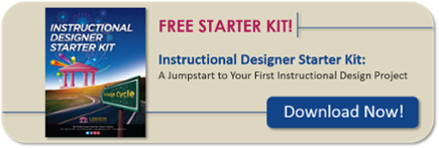Photo by: fauxels via Pexels
If you work in training, you are part of an esteemed group. You’re helpful, friendly, supportive, and care about others. You take the time to design performance-based workshops and deliver them with passion and enthusiasm. Your ultimate goal is to provide innovative and useful training materials that will improve employee performance back on the job.
Here’s the big question, “Are your learners using their new skills and knowledge back on the job?” If your answer is no, it doesn’t really matter how well we’ve designed and delivered the course. Unless our learners are using their new skills back on the job, we haven’t accomplished anything.
Typically, this is where the excuses begin. “It’s too difficult to get this information,” or “It’s out of my control,” or “I don’t have time to do this.” Unfortunately, we can’t rely on these excuses. We need to be proactive and focus on what IS in our control.
So, what can we do to ensure participants transfer new skills back to their jobs? Here are our top 10 tips:
- Ask learners to develop action plans on how they will use these new skills.
- Arrange a follow-up workshop a month or two after the original course. Its purpose is to assess progress, discuss problems in application, and find ways of solving those problems.
- Have learners bring samples of their work to the course and give them time to assess the quality in terms of the new skills being learned.
- Discuss obstacles that could prevent applying the new skills, as well as ways to overcome the obstacles.
- Arrange for learners to attend the course at the same time as other members of their work group so they have assistance and support back on the job.
- Give learners an on-the-job assignment to complete after training.
- Form an alumni association of course graduates to meet occasionally to work on common problems, advanced skills, etc.
- Send out brief quizzes after the course to refresh learners on course content.
- Structure the course in individual modules. After each module, have learners return to their jobs and apply what they have learned. Then have them return for the next module. Start each module by discussing progress or concerns from the last module.
- Phone or send an email to participants a few weeks or months after the course to find out what they have done regarding the course content. Collect the responses and send them out as a mini report to everyone who attended.
Yes, these techniques require extra effort from the training department. I’m sure we can agree that learning is generally a waste of time if people don’t use what they learn. If the training department puts in the extra effort, the learners and organization reap the benefits. Remember, we’re part of that esteemed and special group. We’re helpful, friendly, supportive, and care about others. What do you do to ensure your learners transfer new skills back to their jobs?
To truly maximize your training, secure buy-in and support, and ensure training really does “stick” back on the job, check out our 1-day workshop, Make Your Training Stick.

